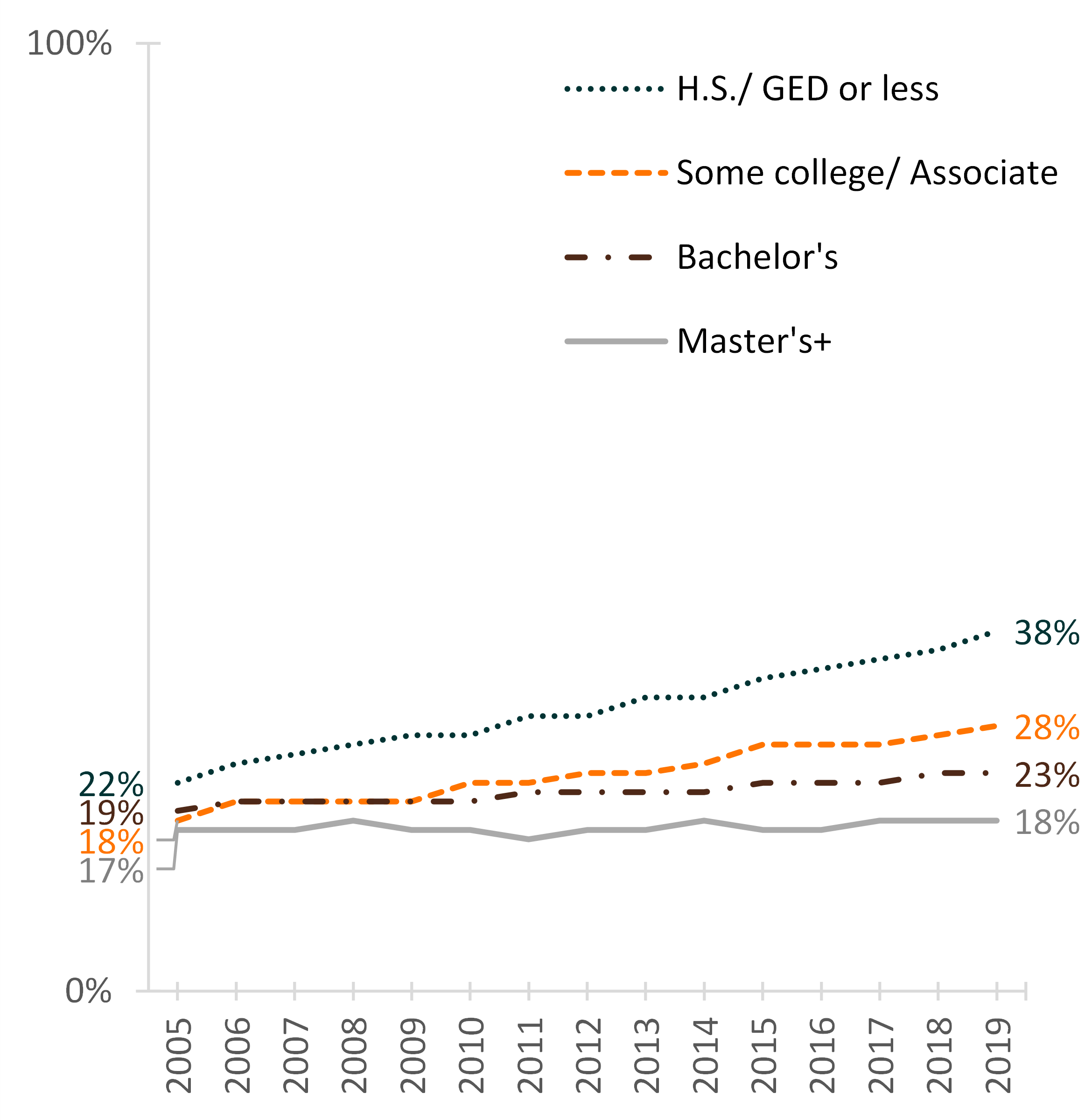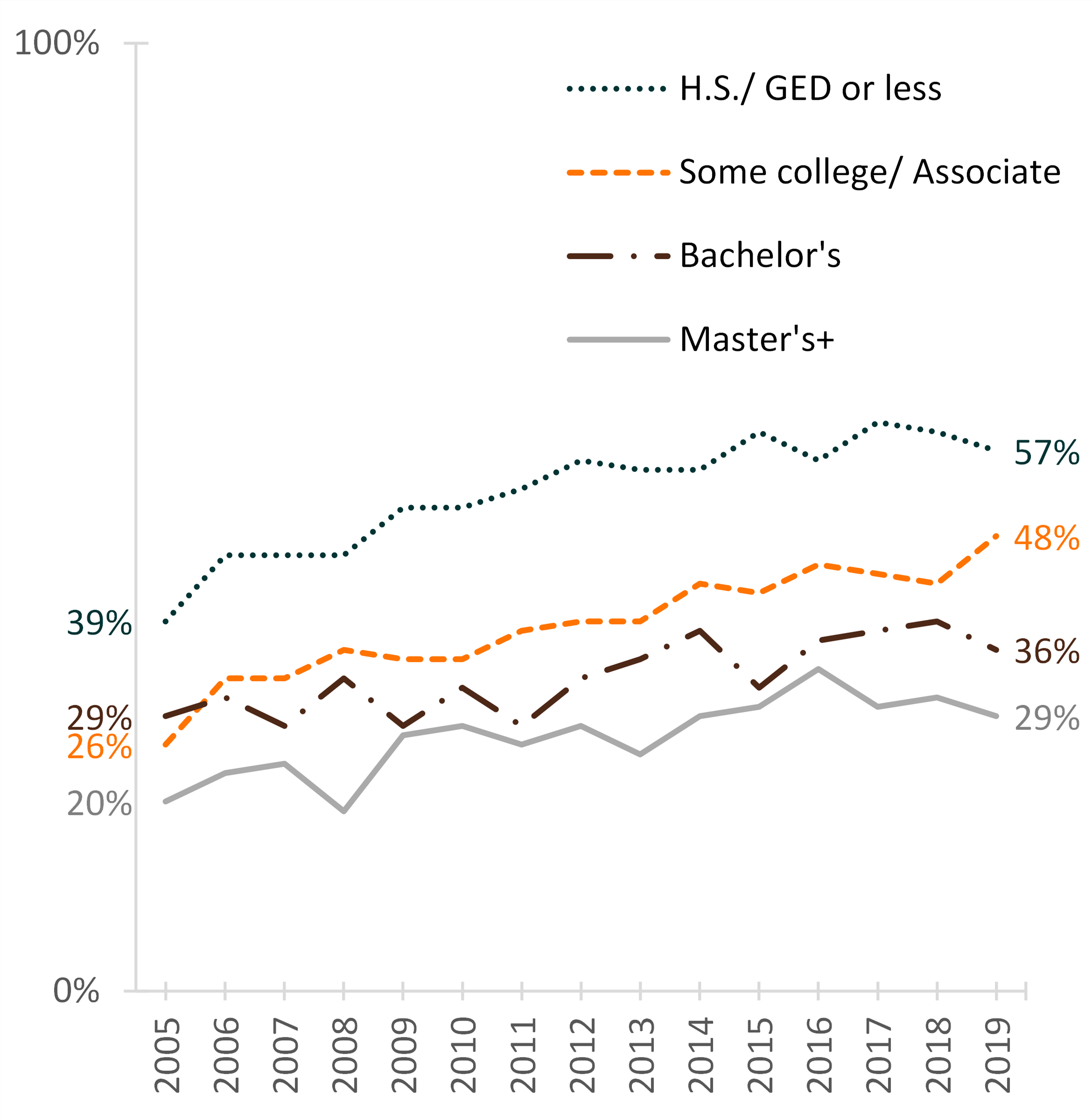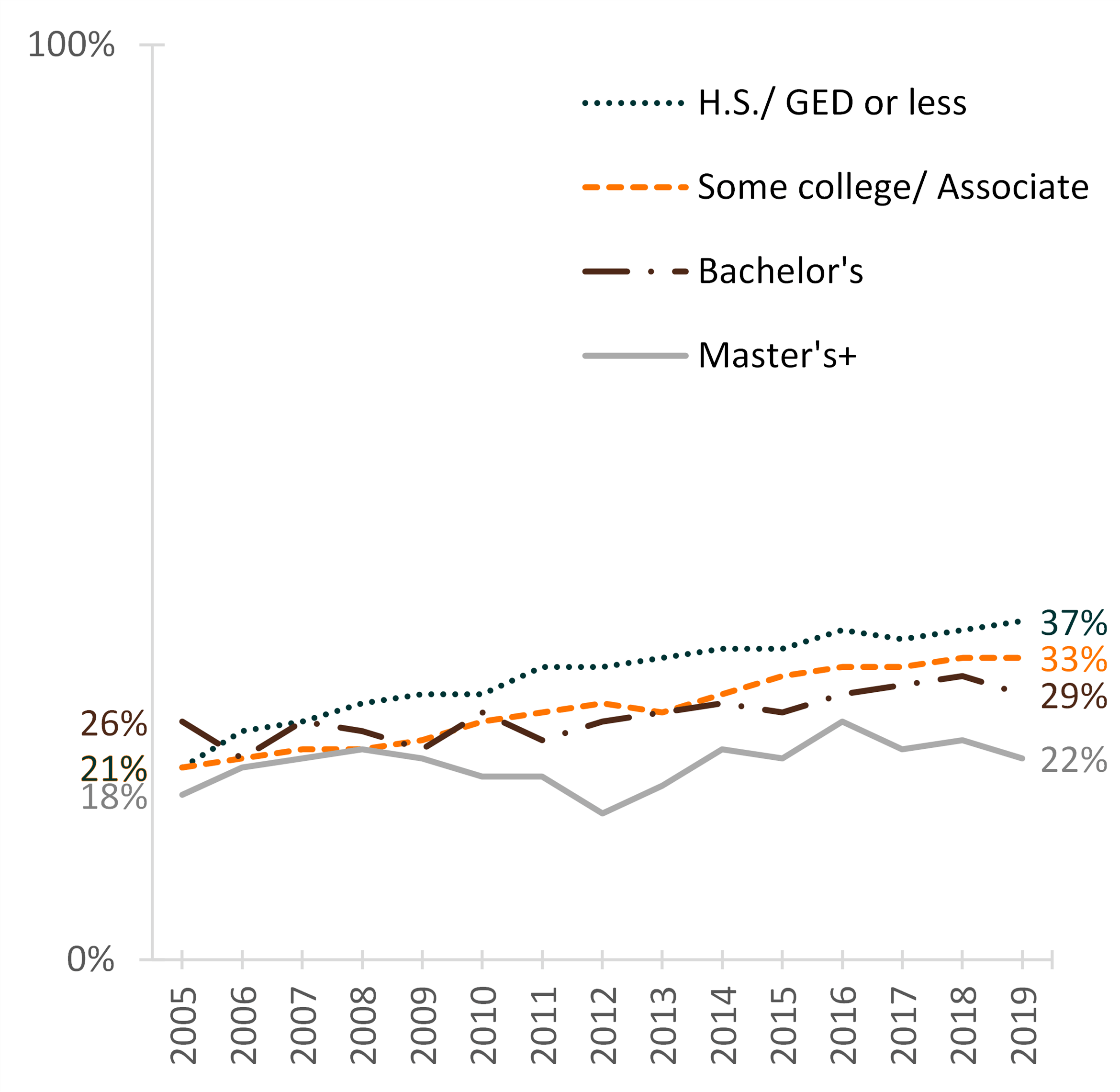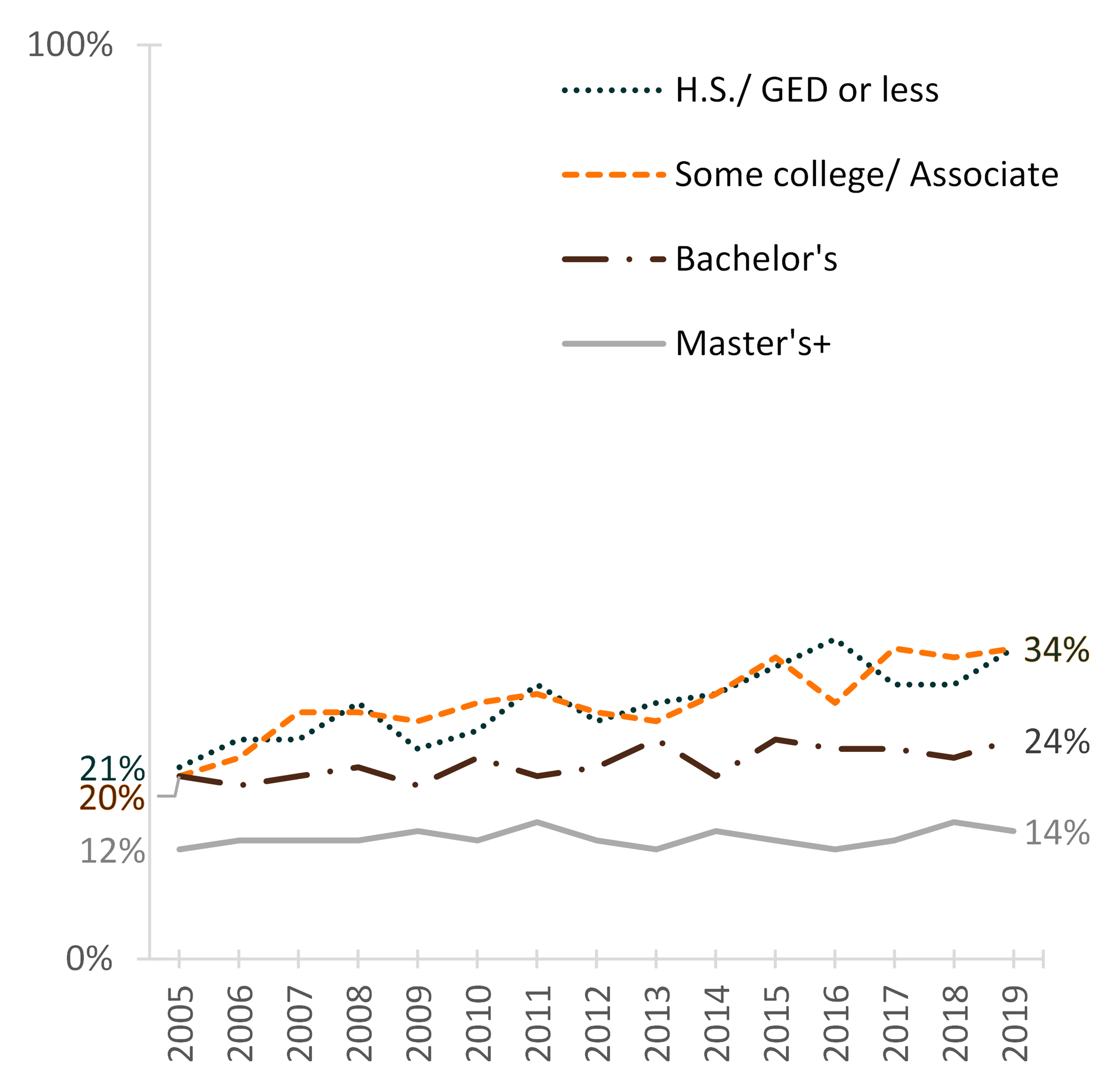Trends in Non-Marriage Among Men, 2005-2019
Family Profile No. 01, 2022
Author: Adrianne R. Brown and Karen B. Guzzo
Marital behavior has changed dramatically in the U.S. (FP-21-24), with variation across sociodemographic characteristics such as education and race-ethnicity (FP-21-12). Using data from the American Community Survey (ACS), this profile examines the share of never-married men aged 35-39 by race-ethnicity and educational attainment. We focus on those aged 35-39 because this age bracket is above the median age of first marriage (the age in which at least 50% of men were married) in 2019 (FP-21-12) and captures most first marital experiences. White, Black, and Asian refers to those who are non-Hispanic and report a single race in the ACS, and Hispanic refers to those who report their ethnicity as Hispanic, regardless of race. Those with a two-year degree are included in the “some college” category.
- Overall, the share of men aged 35-39 who had never married was 32% in 2019, up from 21% in 2005 (not shown). The educational disparities among never married men have widened over this time span.
White Men
- In 2005, the education gradient in marriage was quite narrow. About one in five (22%) of White men aged 35-39 in the lowest education category—H.S. diploma or less—had never married, compared to 17% in the highest education category—post-graduate degree.
- Between 2005 and 2019, the greatest change occurred among those with modest educational attainment. The share of never-married White men aged 35-39 with a H.S. diploma or less increased substantially to nearly two-fifths.
- In contrast, there was little change among those with the highest education levels. In 2019, 18% of men with a post-graduate degree remained unmarried.
Black Men
- In 2005, nearly two-fifths of Black men aged 35-39 with a H.S. diploma or less had never married, compared to just one-fifth of those with a post-graduate degree.
- Between 2005 and 2019, the share of Black men who never married rose to 57% among those with a H.S. diploma or less, but the largest absolute increase was among those with some college, rising from 26% to 48%.
- Conversely, those with a bachelor’s degree but no post-graduate degree had the smallest change—36% had never been married in 2019, up from 29% in 2005.
Figure 1. Share of Never-Married White Men Aged 35-39 by Education, 2005-2019

Figure 2. Share of Never-Married Black Men Aged 35-39 by Education, 2005-2019

Source: NCFMR analyses of the American Community Survey 1-year estimates, 2005-2019
Hispanic Men
- In 2005, among Hispanic men aged 35-39, there were few differentials in marriage by education level. The largest share never married was 26% among those with a bachelor’s degree, whereas the smallest share was 18% among those with a post-graduate degree.
- Between 2005 and 2019, the share of unmarried Hispanic men increased among all educational attainment groups. The largest increase was among those with a H.S. diploma or less.
- The smallest change occurred among those with a post-graduate degree; in 2019, 22% had never married.
Asian Men
- In 2005, the share of never-married Asian men aged 35-39 was about 20% among those without a post-graduate degree. Only 12% of men with a post-graduate degree had not married in 2019.
- Between 2005 and 2019, the share never married increased the most among those with some college—from 20% in 2005 to 34% in 2019.
- The smallest increase was found among those with a post-graduate degree. Their share only increased to 14% in 2019.
Figure 3. Share of Never-Married Hispanic Men Aged 35-39 by Education, 2005-2019

Figure 4. Share of Never-Married Asian Men Aged 35-39 by Education, 2005-2019

Source: NCFMR analyses of the American Community Survey 1-year estimates, 2005-2019
Data Source
- Ruggles, S. Flood, S., Foster, S., Goeken, R., Pacas, J., Schouweiler, M., & Sobek, M. (2021). IPUMS USA: Version 11.0 [dataset]. Minneapolis, MN: IPUMS. https://doi.org/10.18128/D010.V11.0
References
- Payne, K. K. (2019). Median age at first marriage, 2019. Family Profiles, FP-21-12. Bowling Green, OH: National Center for Family & Marriage Research. https://doi.org/10.25035/ncfmr/fp-21-12
- Payne, K. K. (2021). Marital experiences in the U.S., 1996 & 2018. Family Profiles, FP-21-24. Bowling Green, OH: National Center for Family & Marriage Research. https://doi.org/10.25035/ncfmr/fp-21-24
Suggested Citation
- Brown, A. R. & Guzzo, Karen B. (2022). Trends in Non-Marriage Among Men, 2005-2019. Family Profiles, FP-22-01. Bowling Green, OH: National Center for Family & Marriage Research. https://doi.org/10.25035/ncfmr/fp-22-01
Updated: 11/07/2025 03:00PM


